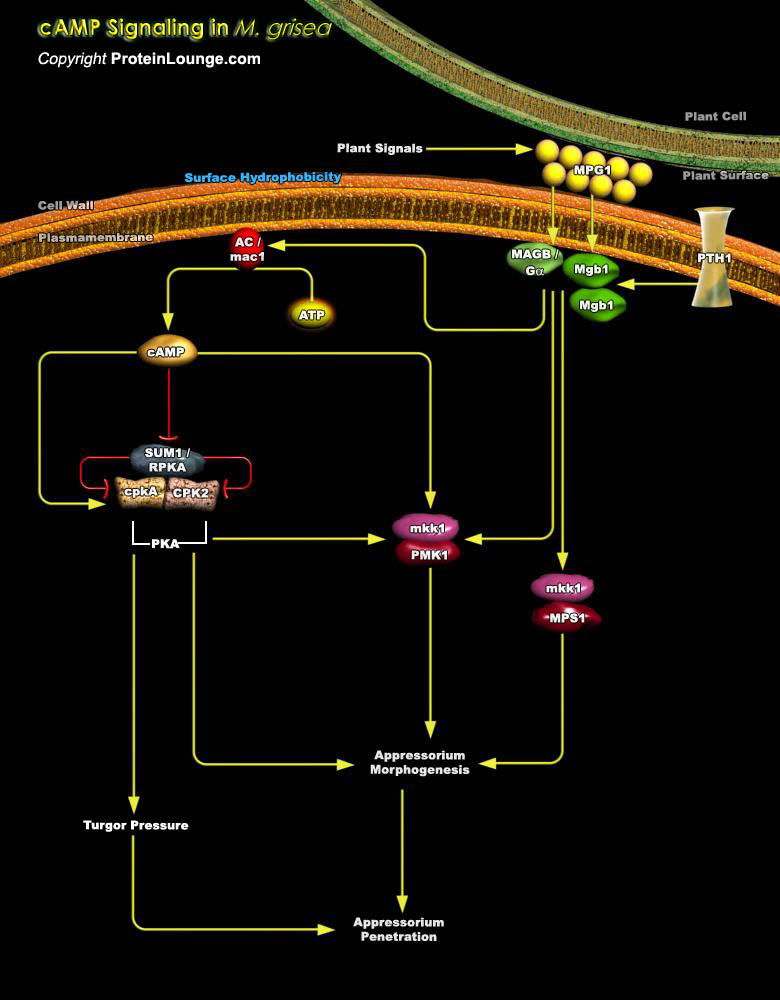
Magnaporthe grisea (M.grisea) is a plant-pathogenic fungus which causes rice blast which is a serious disease of rice plant. It is also known as rice blast fungus. M. grisea is a member of cryptic species complex that contains at least two species, M. grisea and Magnaporthe oryzae (M. oryzae). Strains isolated from Digitaria (e.g. crabgrass and finger-grass) have been defined as M. grisea, whereas members isolated from rice and other hosts have been renamed as M. oryzae (Ref.1). Several signalling pathways including cyclic adenosine monophosphate (cAMP) and Mitogen-activated protein kinase (MAPK) pathways are critical mediators of appressorium development in the rice blast fungus. Other functions include invasive growth, surface recognition, cell wall integrity and[..]
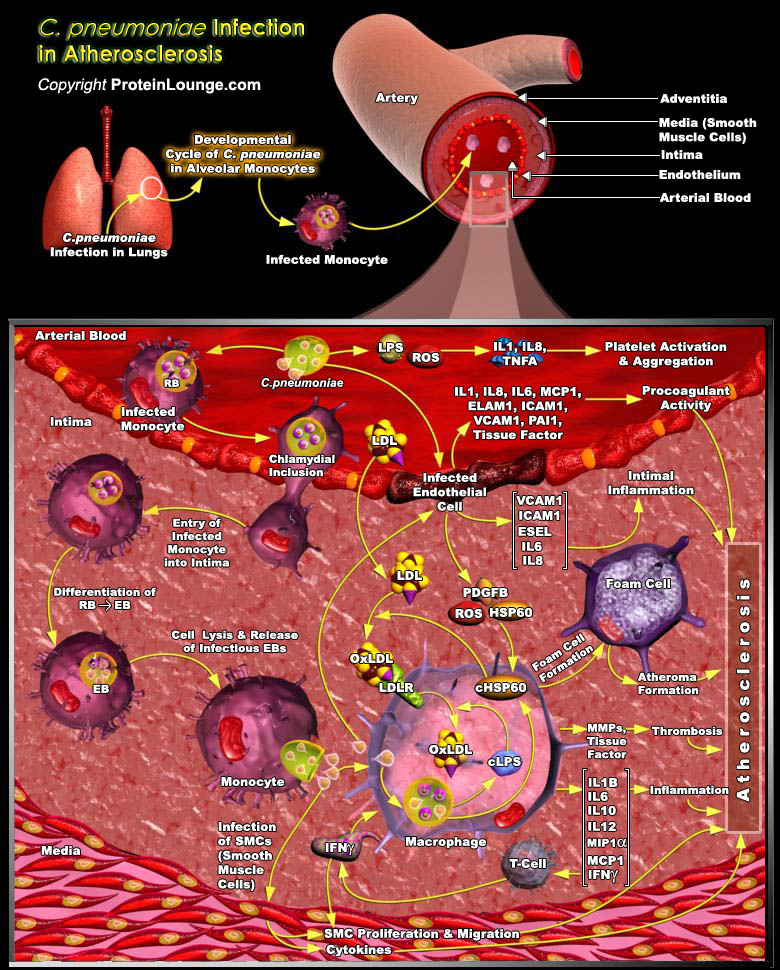
Atherosclerosis, the pathological basis of CAD (Coronary Artery Disease) and Ischemic Stroke, is the commonest cause of death and disability in the western world. Atherosclerosis is a multifactorial, highly complex disease with numerous aetiologies simultaneously and sequentially collaborating in subtle ways to affect lesion development, progression and maturation to an advanced, disease-provoking entity (Ref.1). The lesion, or Atheroma, is an inflammatory site composed of a necrotic lipid-rich core, modified vascular endothelium, SMCs (Smooth Muscle Cells), foamy macrophages, lymphocytes and a variety of inflammatory mediators. Inflammation is the key event in Atherosclerotic Plaque fissuring and rupture, causing adverse clinical events. A variety of risk factors are[..]
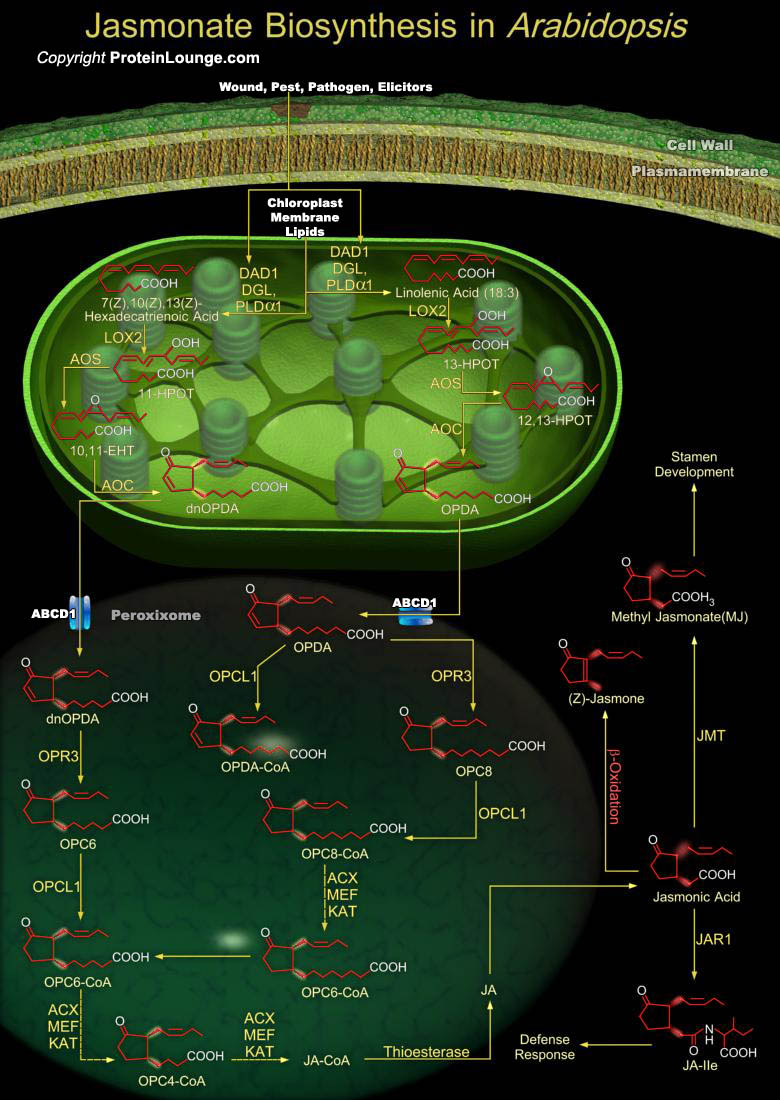
JAs (Jasmonates) are potent Lipid Regulators of Defense gene expression and act in development necessary for fertility. The Jasmonate Pathway performs critical roles in Plant Defense, Development, and Metabolism. Upon activation of plant immunity, several signaling events are initiated along with production of lipids and lipid related molecules including Phospholipids, sterols, sphingolipids, glycerolipids, oxylipins etc. Oxylipins are oxygenated fatty acids containing one or more oxygen atoms. Jasmonates are oxylipins formed by the enzymatic oxygenation unsaturated fatty acids. JAs include Jasmonic acid, methyl jasmonate and jasmonoyl-isoleucine (Ref.1 &2). Jasmonates are derived from oxygenated fatty acids via the octadecanoid pathway and characterized by[..]
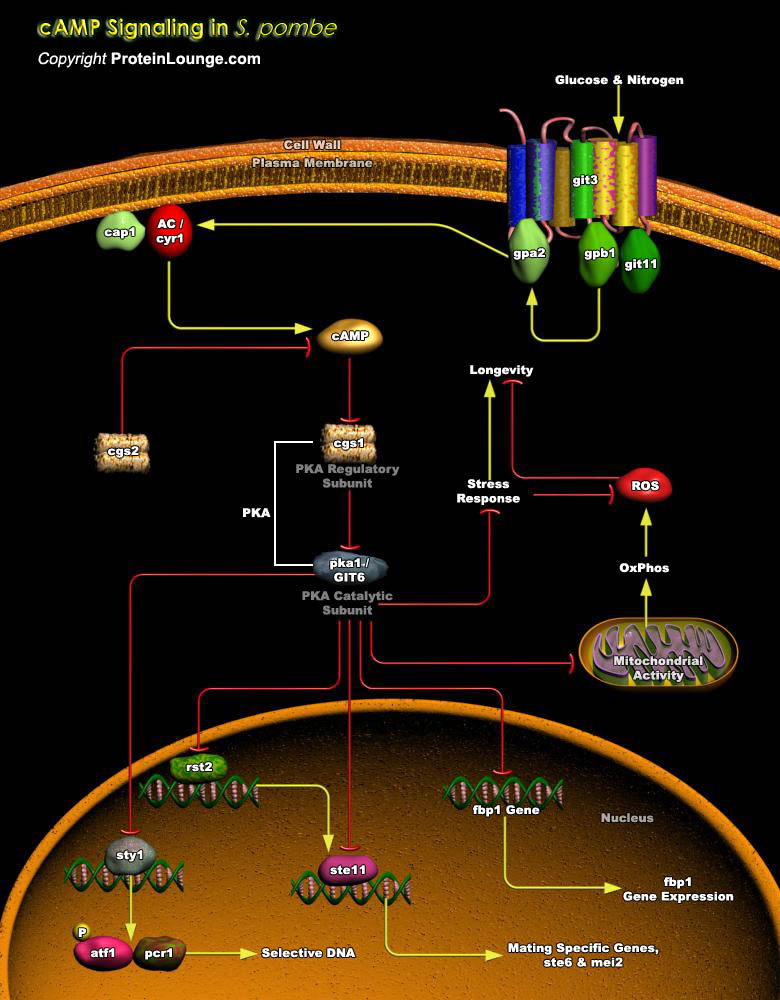
In most eukaryotic organisms, guanine nucleotide-binding protein (G protein) pathways play a critical role in extracellular environment sensing. The second messenger cyclic 3’-5’ adenosine monophosphate (cAMP) is important in G-protein mediated glucose sensing. In the fission yeast Schizosaccharomyces pombe (S.pombe), G-proteins produce cAMP via activation of adenylyl cyclase (AC) in response to glucose detection (Ref.1 and 2).In S.pombe, either Glucose limitation or Nitrogen limitation results in a reduction in cAMP levels. cAMP levels decline rapidly in response to Glucose starvation, whereas cAMP levels decline more gradually in response to Nitrogen limitation, showing different levels of control for Carbon compared to Nitrogen source sensing.[..]
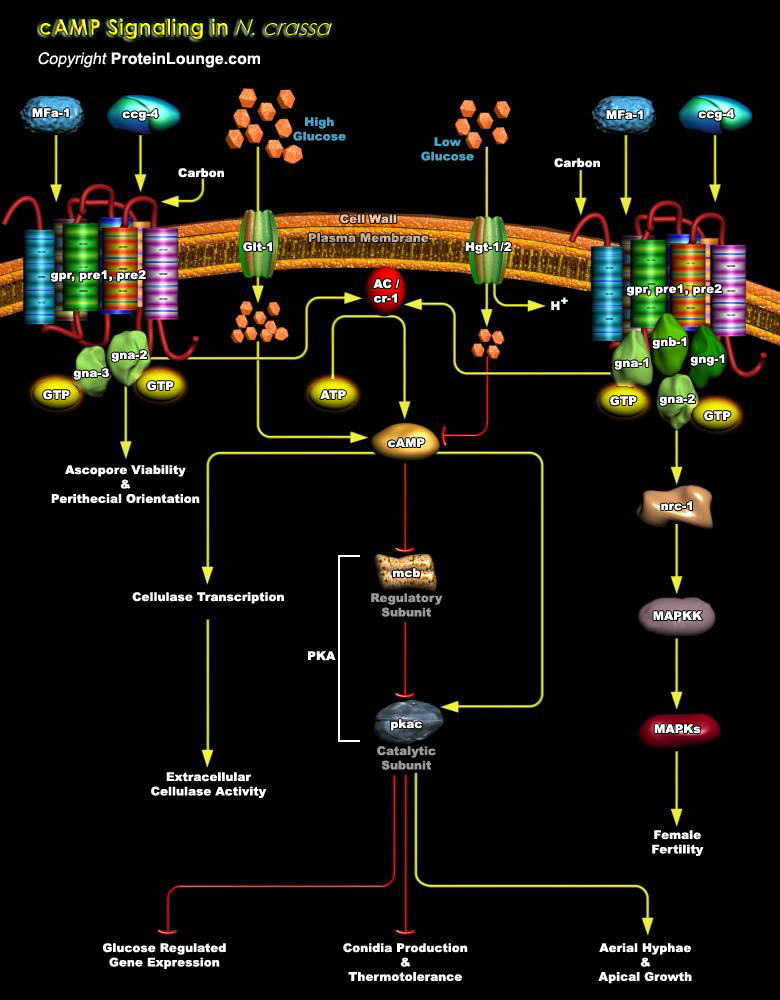
The ascomycete N.crassa (Neurospora crassa) is a heterothallic multicellular filamentous with perforated septa that has defined asexual and sexual cycles. It is generally used as model organism to study DNA methylation, mitochondrial protein import, circadian clock regulation and light sensing in eukaryotic organisms. N.crassa has two mating types, A and a. Under nutrient-rich conditions like Carbon, etc, N.crassa proliferates by the extension and branching of multinucleate vegetative hyphal cells to form a multicellular mycelium (Ref.1 and 2). In response to nutrient deprivation, desiccation and light, N.crassa initiates asexual conidiation. The major determinants regulating the onset of conidiation are the availability of Carbon source and light. The sexual cycle[..]
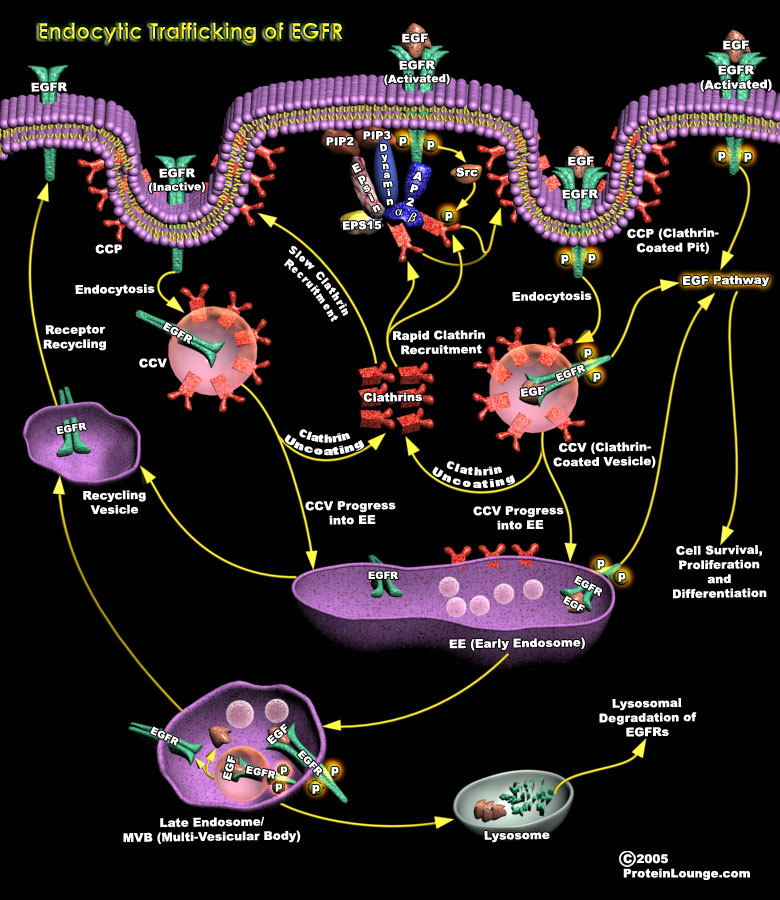
All cells need to interpret their environment. Efficient processing of signals from the extracellular milieu is achieved through dynamic signal-transduction systems. The components of this system that come into contact first with external signals are cell-surface receptors. RTKs (Receptor Tyrosine Kinases) comprise one large group of receptors that respond to polypeptide growth factors and have intrinsic tyrosine kinase activity. On ligand binding, receptor signaling is activated. The activation of RTKs initiates signal transduction and receptor endocytosis. Most activated RTKs are efficiently cleared from the cell surface by endocytosis and sorted to Lysosomes for degradation. In contrast, inactive RTKs are constitutively internalized and recycled back to the cell[..]
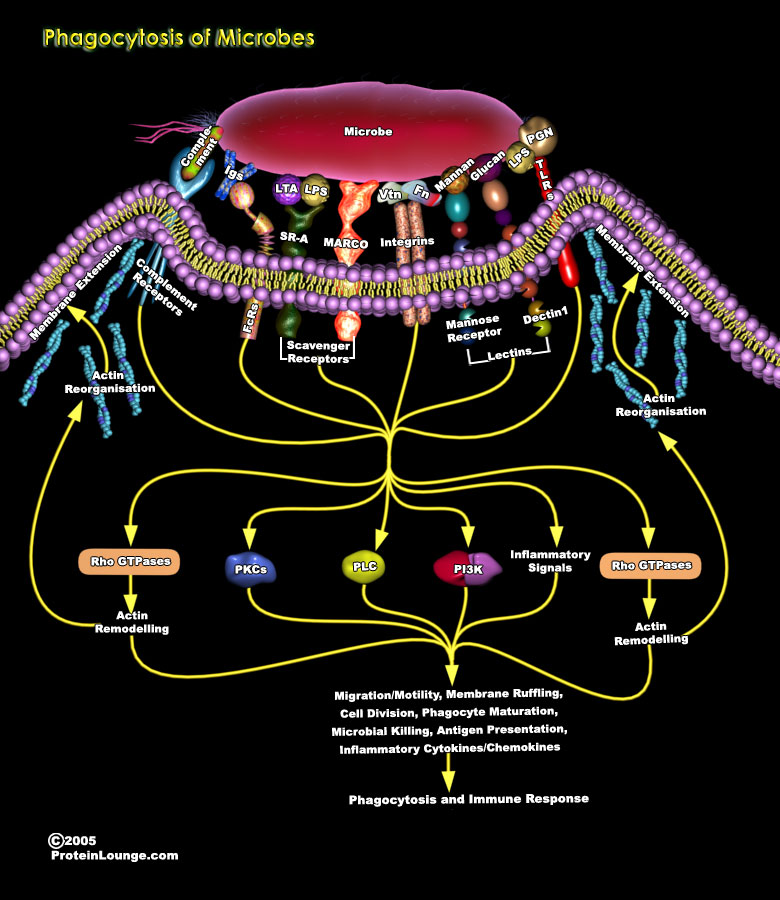
Phagocytosis is an important process for nutrition in unicellular organisms, while in multicellular organisms it is found in specialized cells called phagocytes. Phagocytosis consists in recognition and ingestion of particles larger than 0.5 𝜇m into a plasma membrane derived vesicle, known as phagosome. Phagocytes can ingest microbial pathogens, but importantly also apoptotic cells. In this way, they contribute to the clearance of billions of cells that are turned over every day. Thus phagocytosis becomes essential not only for microbial elimination, but also for tissue homeostasis. Professional phagocytes include monocytes, macrophages, neutrophils, dendritic cells, osteoclasts, and eosinophils. It can be divided into four main steps: (i) recognition of the[..]
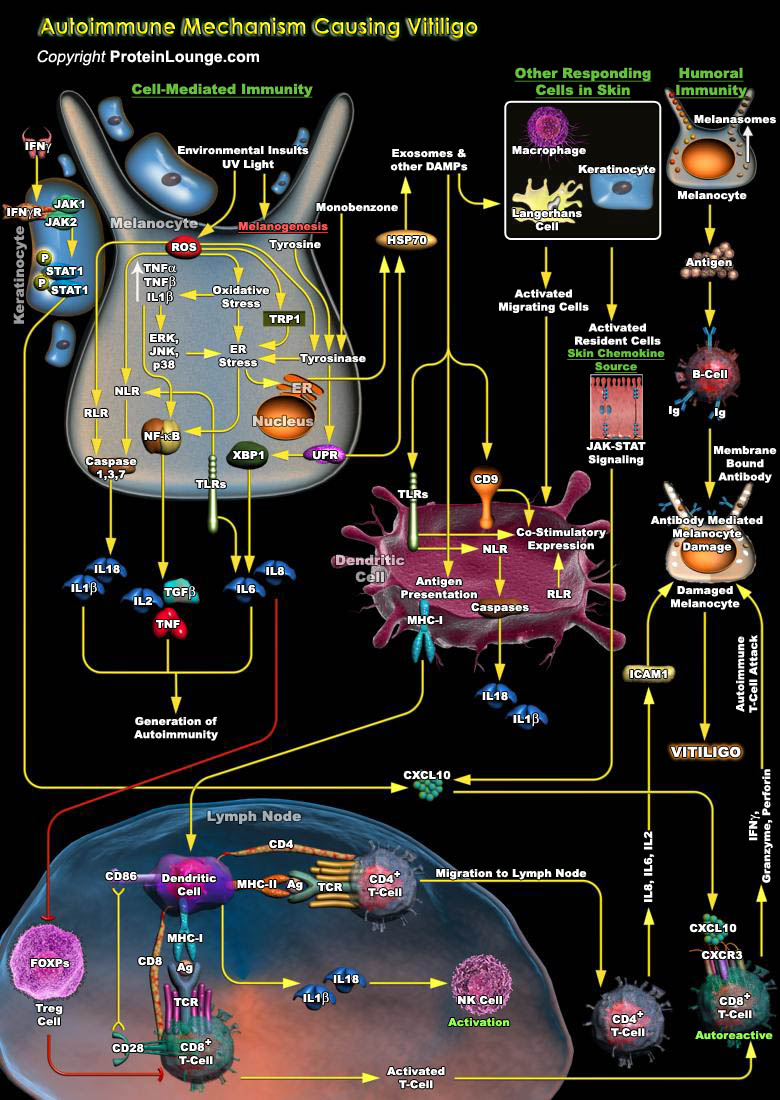
Vitiligo is an acquired autoimmune skin disorder characterized by the destruction of skin melanocytes, resulting in the development of white patches. This disease can be psychologically devastating for the patients. It affects all races and occurs in 0.3–1.0% of the world population, and in 50% of cases the condition begins before the age of 20 years. More women than men are referred with Vitiligo, although the incidence of the disorder is not believed to be sex-linked. Several hypotheses have been proposed regarding the cause of the disease, major among them include stress and autoimmunity (Ref.1). The autoimmune theory is still the leading hypothesis, with several strong reasons supporting it. One of the major reasons is strong association of vitiligo[..]
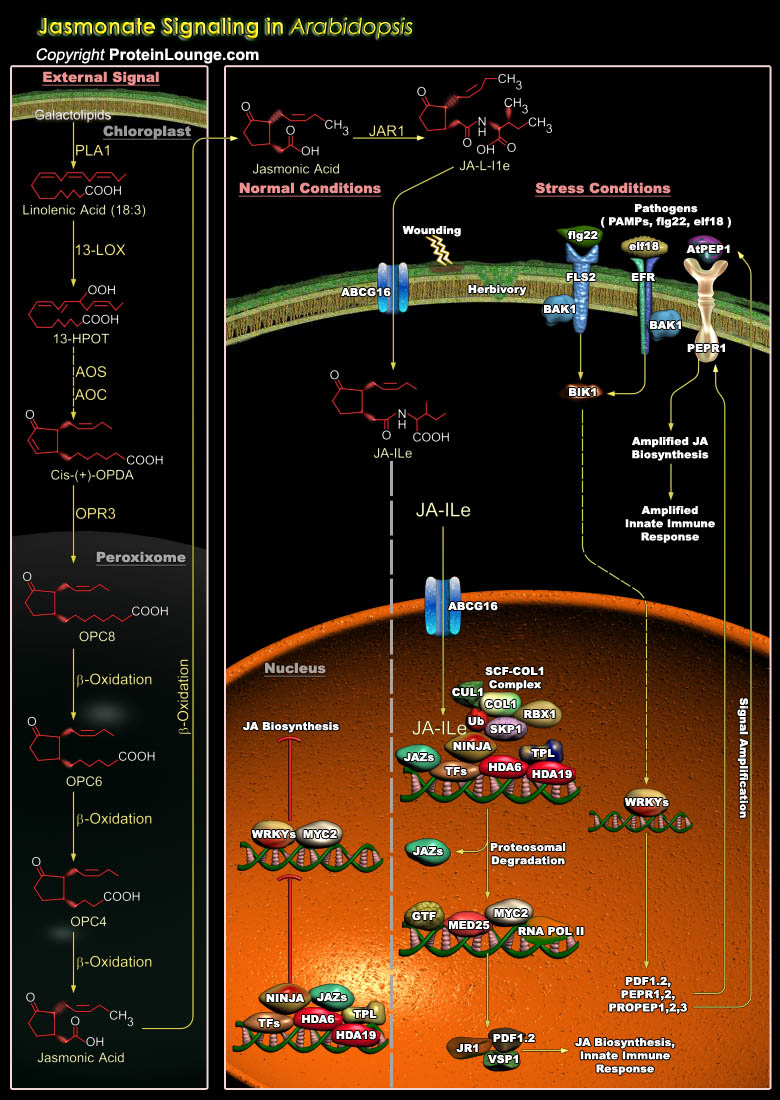
Plants respond to insect attack, defense against herbivory, and wound-healing by activating jasmonate family of signaling molecules. Jasmonic Acid (JAs) are plant hormones that regulate several physiological processes like defense responses to a variety of biotic and abiotic stresses, growth, development, fertility, and senescence. JAs can also inhibit growth by suppressing mitosis in apical meristems as well as inhibit photosynthesis and energy-generating processes. In Arabidopsis, JA mediated defense response against both herbivore and necrotrophic pathogen attack occurs via interaction of both JA and ethylene (ET)-signaling pathways in a synergistic interaction. This leads to the activation of pathogen-related defense genes like PR5 (pathogenesis-related[..]

Apoptosis (also called programmed cell death) is a cellular death program that is inherent to all mammalian cells and plays an important role in the regulation of various physiological and pathological conditions. It serves to eliminate any unnecessary or unwanted cells and is a highly regulated process. There are a wide variety of conditions that will result in the apoptotic pathway becoming activated including DNA damage or uncontrolled proliferation. The apoptotic pathway is activated by both intracellular and extracellular signals. The central apoptotic machinery can be divided into two major signaling pathways, comprising the death receptor (extrinsic) and the mitochondrial (intrinsic) pathway. Both pathways eventually fuel into a common effector phase that is[..]
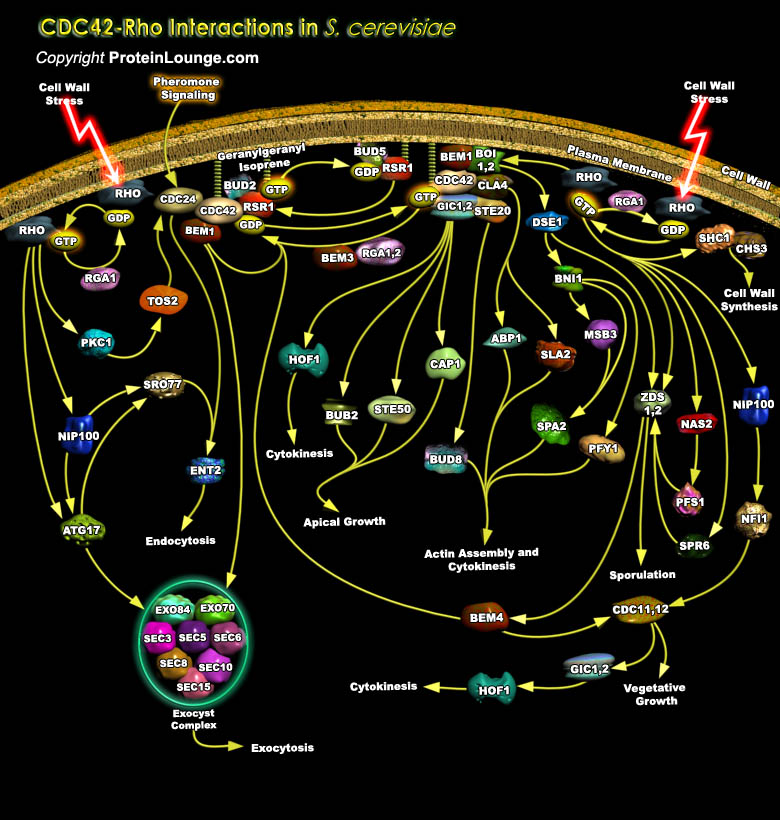
Cell Polarity is an essential characteristic of virtually every cell type. The budding yeast S. cerevisiae (Saccharomyces cerevisiae) has been critical for elucidation of proteins and mechanisms that underlie Cell Polarity development. Polarized Growth is mediated by a series of steps involving cortical landmarks, Rho GTPases and a polarized Actin cytoskeleton. Actin cortical patches are essential for normal Endocytosis and secretion is targeted to the bud or mating projection, allowing selective growth in that area. Patches are associated with invaginations of the plasma membrane and occur in polarized clusters at regions of cell growth in budding cells. One of the crucial Rho type GTPases is CDC42 (Cell Division Control Protein-42) which facilitates decisive event[..]
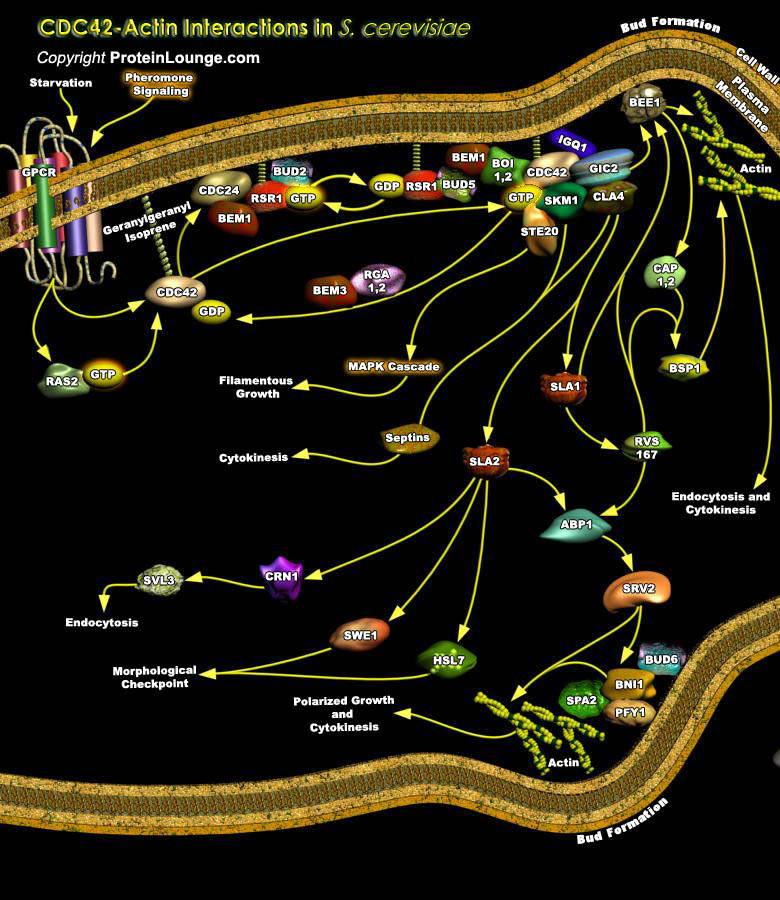
Actin cortical patches are one of the major cytoskeletal structures in yeast and are essential for normal Endocytosis, Cell Growth and Morphology. Actin cortical patches are associated with invaginations of the plasma membrane and occur in polarized clusters at regions of cell growth in budding cells (Ref.1). Patch Assembly probably begins with the association of assembly factors recruited to the plasma membrane by CDC42 (Cell Division Control Protein-42) and its associated proteins and is then followed by nucleation of Actin filaments and Actin-dependent association of proteins regulating filament assembly and stability. Prior to bud emergence in S. cerevisiae (Saccharomyces cerevisiae), cells polarize the Actin cytoskeleton toward the future bud site and assemble a[..]

